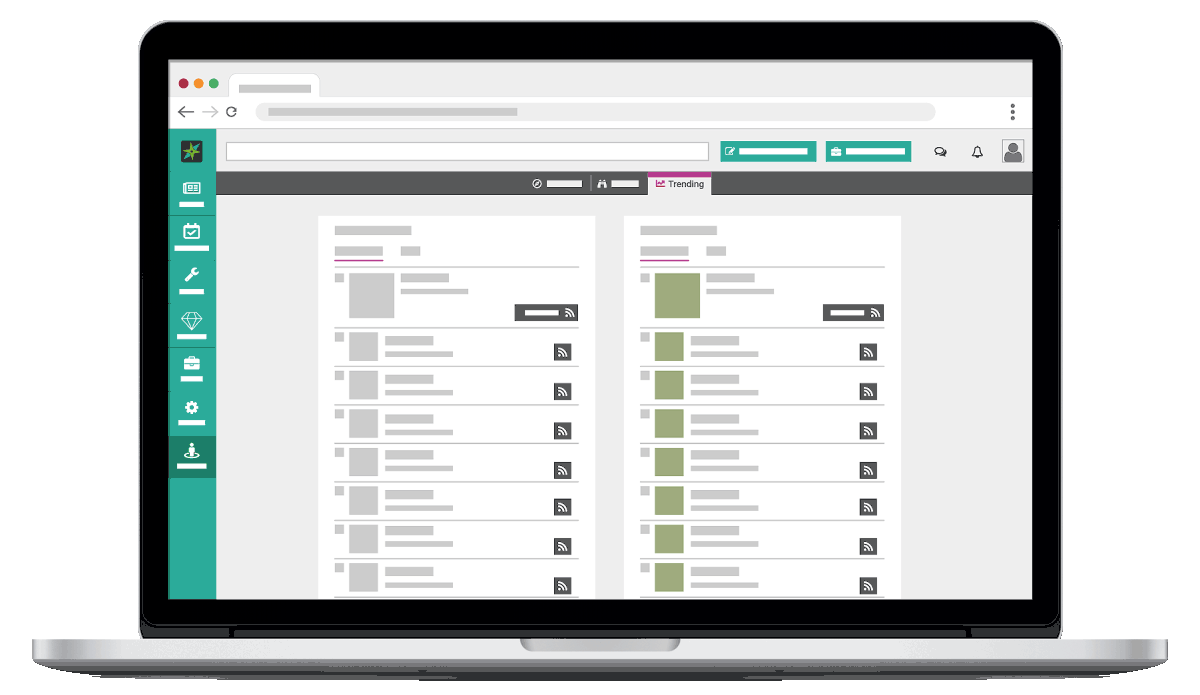Financial firms are still grappling with MiFID II, just over a year since the regulation came into force.
What was originally intended to be internal EU regulation has now transcended borders, its impact felt by those who produce and those who consume investment research across global financial markets.
Making sense of this labyrinth of change can be a tall order given how quickly market players have moved to implement their various responses.
In this special blog feature, Smartkarma unveils a range of perspectives drawn from our network of independent Insight Providers to help establish greater clarity of what’s transpiring on the ground – and where.
Price Wars, More Red Tape, and the Search for Differentiation
The initial impact of MiFID II has been to sharply reduce the price paid for research as large banks have led pricing down. Over time, lower prices will lead to lower quality and some houses eventually withdrawing from research.
However, that is a massive step and big banks will be very reluctant to exit. Research is still seen as essential if a broader trading relationship is to be maintained. None of that is particularly good news for independent research. However, the cost structure of independent research is so different for the banks that the pressure is hopefully manageable.
While MiFID II is Europe-focused, we have seen many funds become MiFID II-compliant to simplify their own processes, while some have chosen to follow it to reduce costs. In general, MiFID II has increased bureautic processes, with costs moving from research production to managing research. Hardly a positive outcome.
On the more positive side, we are seeing more enquiries from funds looking for differentiated research. They are typically not index huggers.
– Michael Chambers
New Street Research
US: Mixed Reactions
For buy-side firms domiciled in the US, but with either EU operations or funds catering to those clients, MiFID II is in full effect. Those firms follow the MiFID II guidelines for research consumption.
While the production of reports hasn’t changed, pricing has been dramatically impacted as those firms try to absorb a significant expense (research budgets) that was previously dealt with through soft dollars.
Our EU clients have generally decided to pay for research through hard dollars, and research budgets have been slashed dramatically. Cuts of well over 50 percent have not been uncommon.
Marketing to any prospective EU-based clients has also been impacted, as blast emails and free trials are now unwelcome and raise the anxiety of any recipient not wanting to run afoul of the MiFID II police.
On the other hand, firms based in the US without a foreign footprint have generally not felt the urgency or necessity to adopt these guidelines as of yet. Research is produced, distributed, and paid for as always.
– Joe Jasper
Vermilion Research
Read our commentary on the introduction of temporary no-action reliefs in the US:
The SEC Hands Out MiFID II Lifelines, But US Firms Are on the Clock
Latin America: Not So Dissimilar from the EU
From the buy-side perspective, very large (global and international) asset managers and hedge funds are implementing the directive globally, which impacts the relationship with global and local brokers as providers of research services.
From the sell-side angle, the directive is also being implemented globally by the bulge bracket and other international investment banks.
So increasingly, as within the EU, we see dedicated pricing for research services, and at the margin, a reduction in coverage of smaller and mid-cap corporates especially by the bulge bracket. We perceive a shift of research coverage, especially in mid-caps, of quality and quantity towards locally-focused brokers initially.
With time, as bigger gaps in coverage emerge, independent research providers should take hold in Latin America. Currently in Brazil, there is at least one web-based research platform offering research products to domestic subscriber investors, and the strategy is to take this region-wide.
With regard to IPOs, there does not yet seem to be the regulatory push (as we are seeing in the UK) for independent analysts to participate in the process of due diligence.
– Victor Galliano
Independent Insight Provider
Asia: The Overarching Impact
MiFID II has already started putting pressure on large and mid-tier domestic brokerages across Asia and led quite a few to question their “me too” approach to research coverage. Given the relatively underdeveloped independent research landscape in Asia, it will hopefully nudge more analysts to take the plunge like we did, and provide true unconflicted research. A deeper independent research pool, in turn, will be better for investors and for markets.
– Sumeet Singh
Aequitas Research
China: Walled Up Against MiFID II
MiFID II may not have much of an impact on the Chinese domestic market. The government controls the flow of Chinese funds that want to invest in overseas stocks, and overseas funds that want to invest in China. Only a very small proportion is approved by the authorities.
– Ming LU
Independent Insight Provider
Japan: Succumbing to Free-Market Competition
MiFID II does not apply in Japan and a number of local subsidiaries of foreign fund management firms have changed their direct parent company structure to avoid compliance with the directive. Nevertheless, global and local brokers have responded by offering very low fees for total research access, including Japan equity research.
Irrespective of MiFID II and as a result of client pressure, most fund management houses are moving to paying for all research access from their own P&L, and are bringing Investor Relations introduction and roadshow organisation in-house.
In the ‘brave new world’ that has resulted from the directive’s implementation, the perhaps unintended consequence is that independent research houses in Japan are struggling now to make inroads into already-long ‘approved research provider’ lists at most asset management firms.
To succeed, independent research firms will have to offer a highly differentiated product, keep costs to a bare minimum, and maximise the use of innovative and efficient distribution channels such as Smartkarma.
– Campbell Gunn
TAP Japan Research
Southeast Asia: Dwindling Coverage Seeds New Opportunity
The impact of MiFID II on investment research in Southeast Asia has probably been more marked and more immediate than for the larger markets in North Asia.
Southeast Asia is the first place that large-sized investment banks have cut back their research budgets, reducing the number of analysts on the ground and hence the stock coverage.*
The ability for European fund managers to pay smaller regional brokers has also been diminished, as they are paying for research out of their own pocket, putting pressure on these players. The bottom line is that some good-quality smaller companies have very little coverage and often coverage of large-cap stocks is left to increasingly junior analysts without the experience of longer-term cycles.
This opens the way for high-quality independent analysis of Southeast Asian companies and markets. The corporates themselves are very open to meeting with independent analysts, especially when they can see that the research being written is widely distributed to institutional investors, as with Smartkarma.
– Angus Mackintosh
CrossASEAN Research
*Note by Smartkarma: Maybank Kim Eng is one exception. The investment banking arm of Malaysia’s largest lender has opted to close its Hong Kong and China equity research operations in order to service its near-term vision of becoming a leading Southeast Asian bank by 2020. Regardless, the fact that Maybank had to choose one location over the other demonstrates the resulting trend of streamlining derived from MiFID II’s impact.
Australia: More Transparency, More Intense Competition
In the Australian equity market, the local regulator has not enforced MiFID II on the asset management and brokering industries, but its implementation in other jurisdictions has had spillover effects.
Global funds managers based in Australia have implemented the change in policy and this has led domestic fund managers to follow suit. We predicted this outcome even before the policy became law in Europe.
Asset managers now make cash payments to brokers for research and phone calls. Both parties are required to keep minutes of any analyst meeting, including an assessment of the value created. That inadvertently creates more administrative work.
Commissions paid to brokers have fallen significantly and by around 20 percent across the industry.
The large global brokers are offering their research services to asset managers at a price well below the cost of producing the service and this is squeezing the mid-tier brokers that don’t have large global platforms. For example, an asset manager can pay a global broker around US$30,000 per annum for access to their entire research platform.
Mid-tier brokers without the extensive research offering are being cut as a service provider. Although none of these brokers have exited the Australian market, they are likely to do so over time.
Smaller niche brokers that use research to support small capital market deals have been unaffected and this is likely to continue; they may even see an increase in market share as mid-tier brokers leave the industry.
The market still remains oversupplied with research and is still difficult for independent research providers (IRPs) to penetrate. However, the asset management industry is now focused on paying for what it perceives as quality research. Over time, such demand should create opportunities for IRPs.
– Shane Lee
Macro Strategy Advisors
In Summary
There is little doubt MiFID II has caused quite a stir in financial markets beyond Europe’s borders. Nonetheless, the need for sweeping change also opens a rich seam of opportunity for IRPs and research distribution platforms to step up to the plate.
Three emerging challenges remain unsolved:
- The quantity and quality of research coverage continues to dwindle globally.
- Increasing bureaucracy is contributing to rising costs for managing research.
- Clients value differentiated research more than ever.
All three reinforce Smartkarma’s combined value proposition.
Join For FreeCreate your free account to access unlimited Executive Summaries, full research samples, and personalised alerts
Join For FreeCreate your free account to access unlimited Executive Summaries, full research samples, and personalised alerts
















 Is this solution effective? For a while, maybe.
Is this solution effective? For a while, maybe. 
 What happened? “External demand remained subdued due to the trade frictions between China and the US, while domestic demand weakened more notably,” CEBM Group’s Director of Macroeconomic Analysis Zhengsheng Zhong explained in a
What happened? “External demand remained subdued due to the trade frictions between China and the US, while domestic demand weakened more notably,” CEBM Group’s Director of Macroeconomic Analysis Zhengsheng Zhong explained in a 

